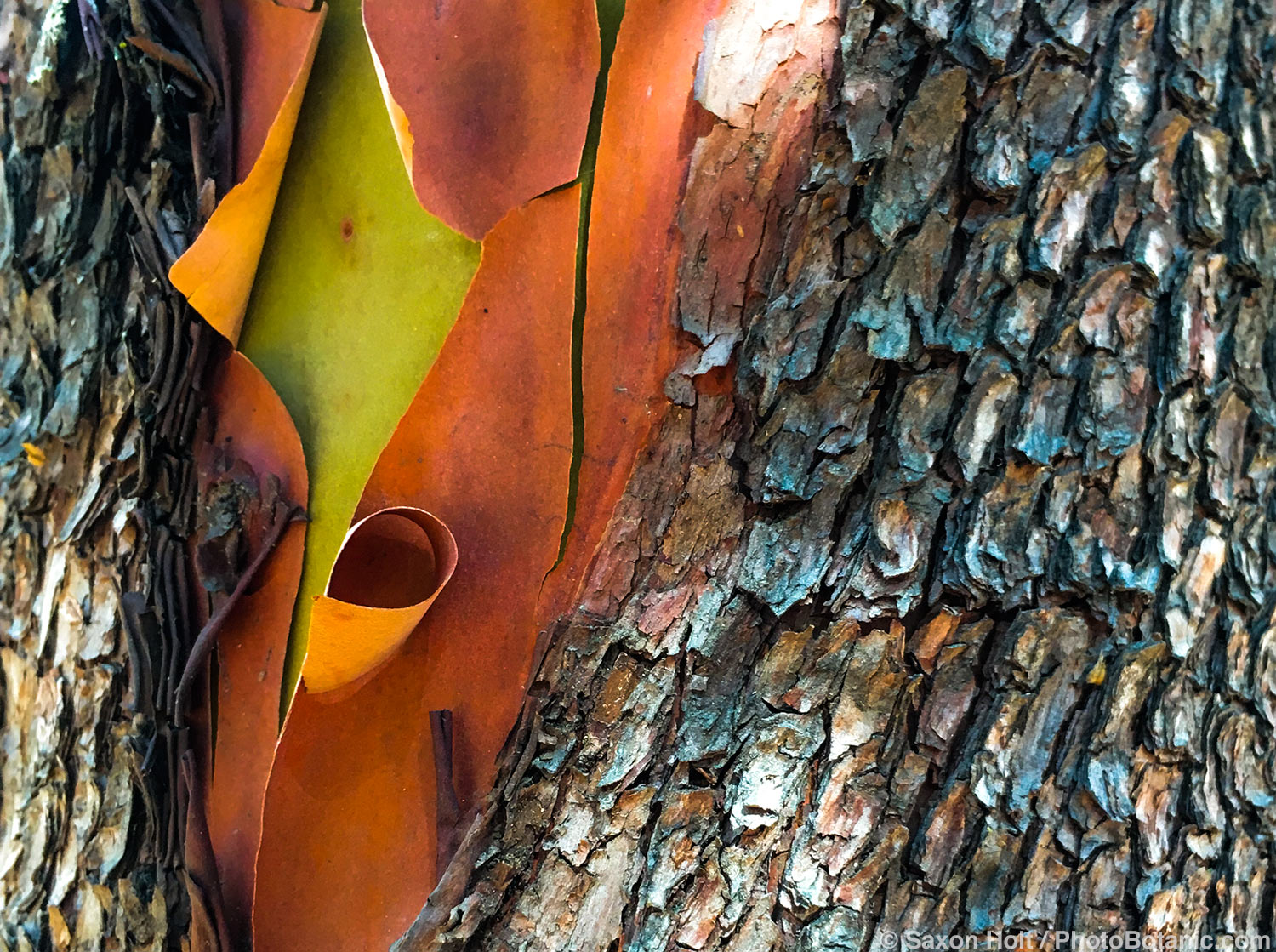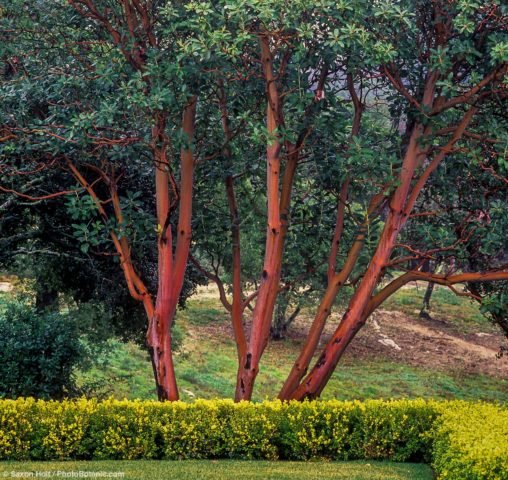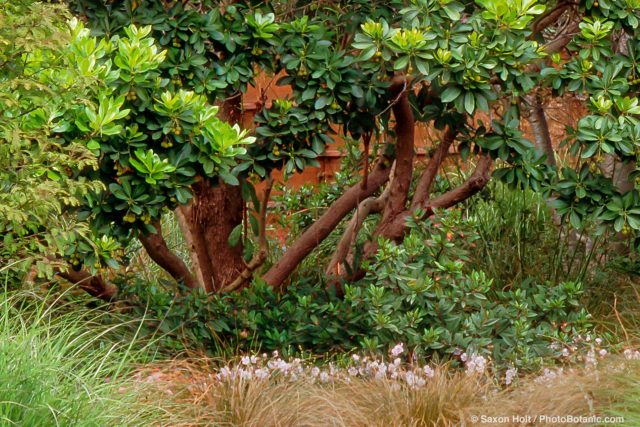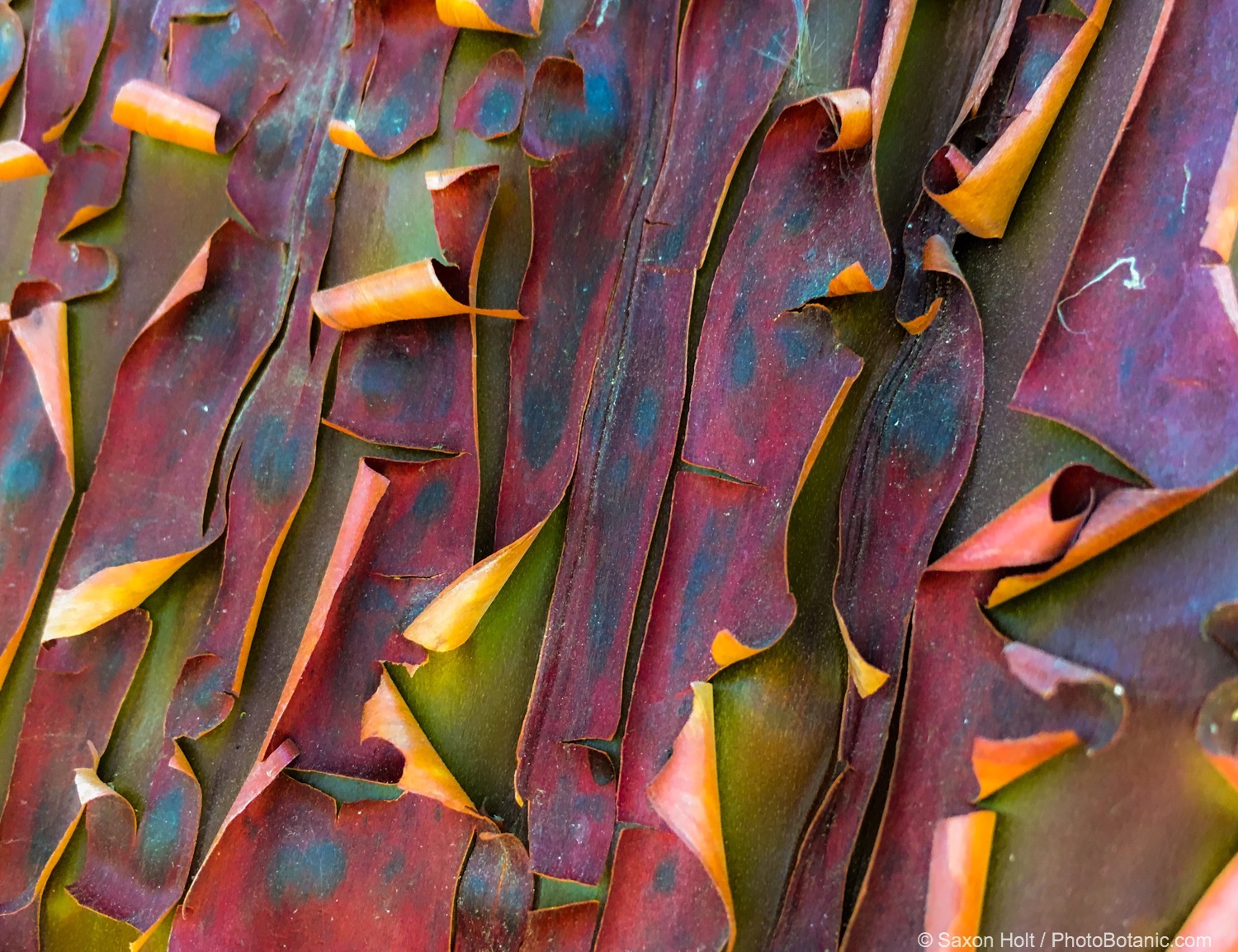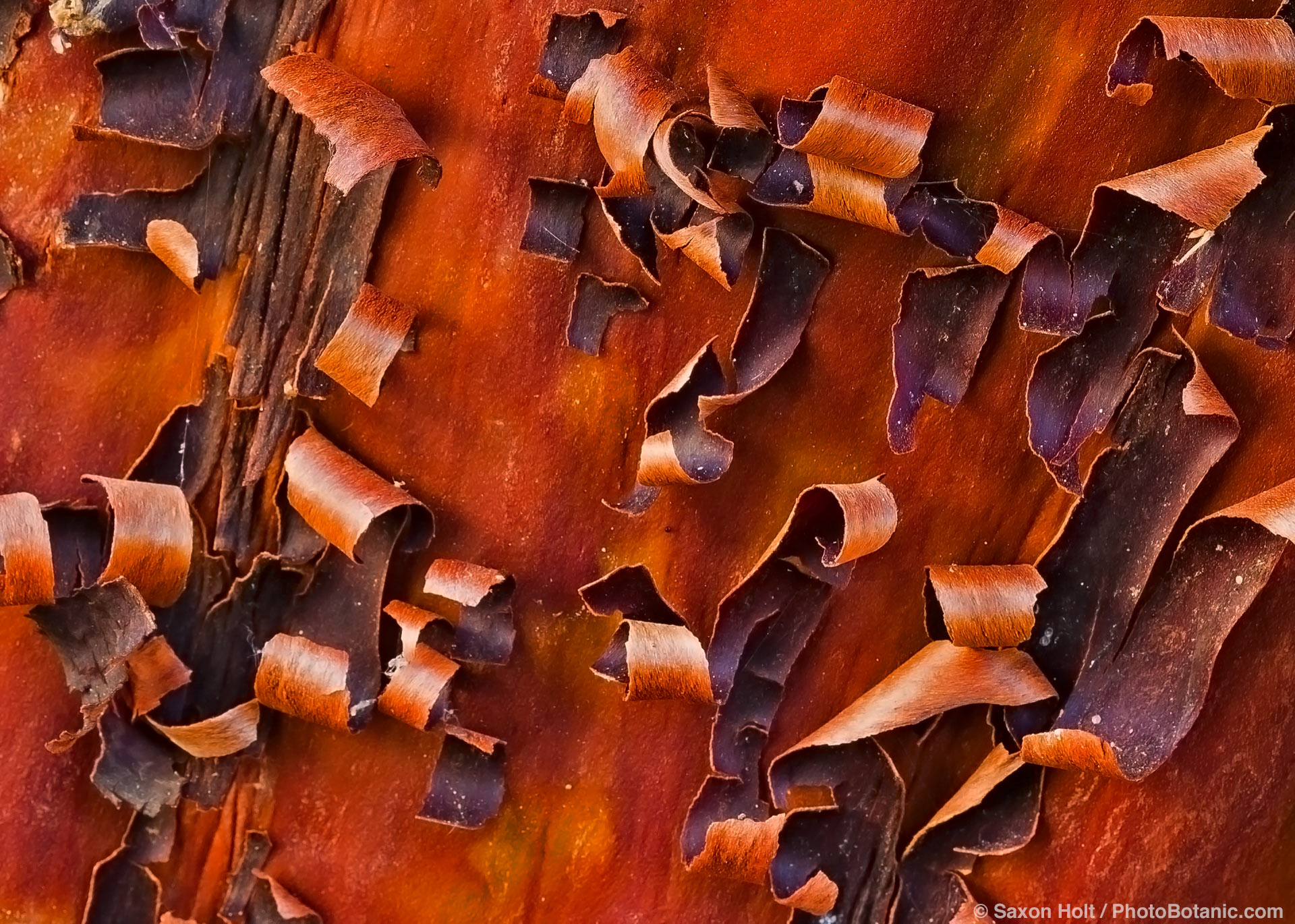It’s summertime. It’s hot. Time to shed a little bit of clothing.
In California, some of our finest native trees and shrubs strip down and shed their bark. It’s called exfoliation, and I swear it seems to happen overnight. I have friends who say they have heard it. I wonder if it’s like the sound of popcorn?
I walked a woodland trail near my home recently with my dog Kona, who has learned to be patient when I stop for photos.
This is a trail I know well, and saw it with fresh eyes because the bark of the Madrones and Manzanitas was bursting. It has been hot recently and I am convinced that is the trigger that makes the bark peel back every summer. It’s wild.
Scientists are not entirely sure how exfoliation evolved in the plant world. There is evidence it is a protective measure against boring insects, but surely for these California natives in our summer-dry climate, the bark break and peel is part of how they grow, a molting creature bursting a corset. When the bark peels back there is invariably a greenish tint to the new layer, a new opportunity of photosynthesis for the plant before the skin toughens up for winter and the next rainy season.
And beautiful skin it is, the bark of Madrones at Manzanitas range from copper to red to mahogany. This is a prized ornamental feature but these wild plants can be tough to grow in gardens. Even in California where Manzanitas (Arctostaphylos) are native across much of the state, gardeners need to be careful to select species matched to their climate in a sunny dry spot.
But when well-placed, and well pruned to reveal the dramatic trunks they are spectacular.
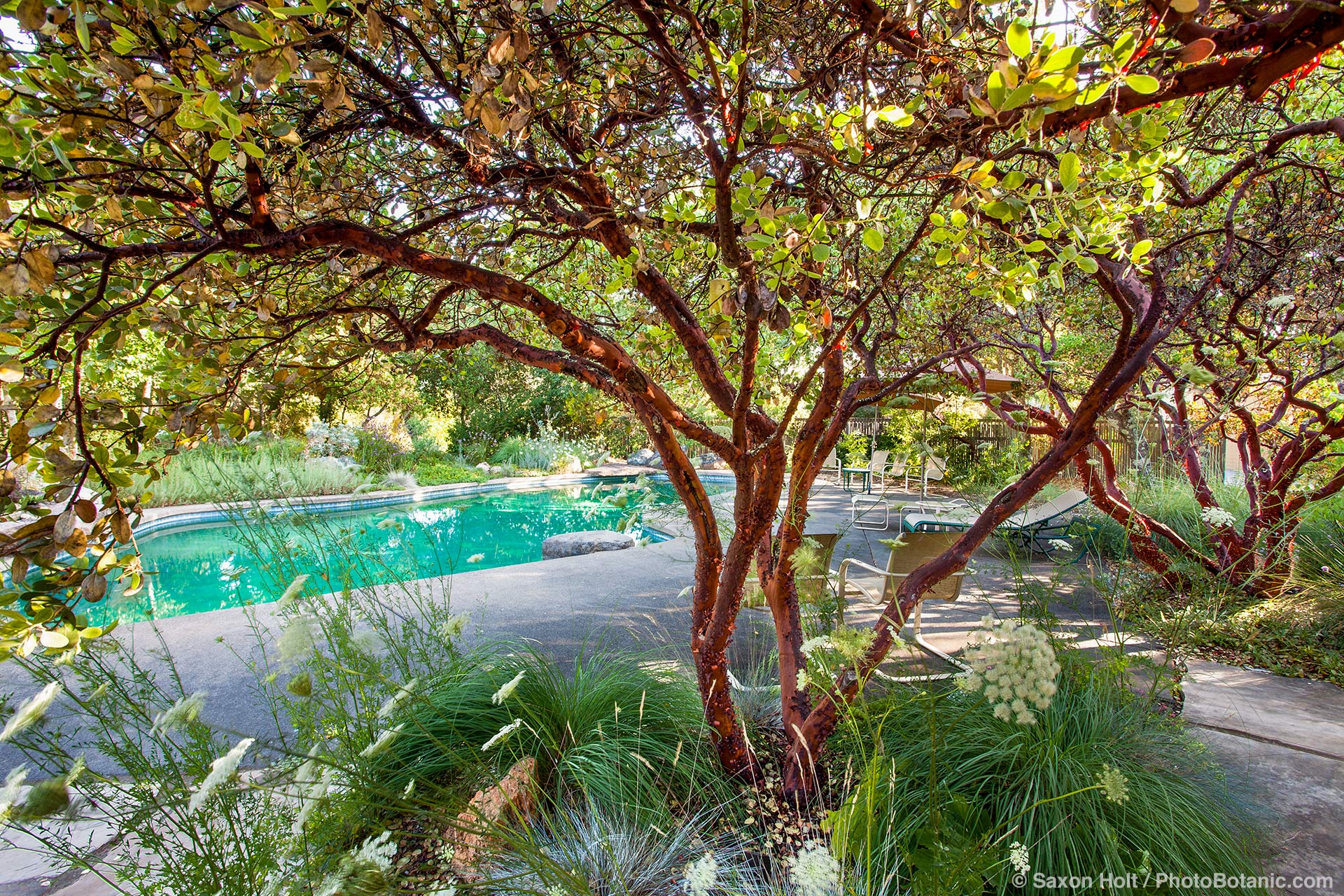
The native Madrones (Arbutus menziesii) are even harder to use in the garden, as they seem to require specific mycorrhizal soil conditions. I can grow them because they’re native on our property. I have planted two and it brings a smile to my face recalling the native plant nurseryman who sold them to me, only after verifying where I lived. Yes, I am a lucky gardener. Looking for tree services Greensboro? Contact RMZ Tree Service to keep your landscape thriving.
These Madrone in the next photograph are in a garden in Napa County where the gardener quite cleverly built the ornamental (and watered) part of the garden to the edge of the native section that gets no supplemental water and the soils are undisturbed.
Gardeners who love the look of the native Madrone usually use a great alternative, the Strawberry Tree, Arbutus unedo, a native of the mediterranean, another summer-dry climate, though it does not peel quite so dramatically.
I would be curious to hear from readers about other trees with the peeling bark; there are paper bark maples, shagbark hickory, river birch, crêpe myrtle, sycamores, Melaleuca, and even some conifers like bald cypress, all have dramatic exfoliation. Your favorites ?
I do love our California native Madrone, Arbutus menziesii:
And manzanita, Arctostaphylos manzanita:



